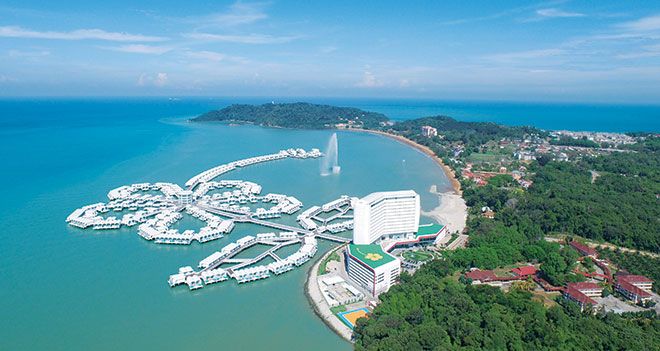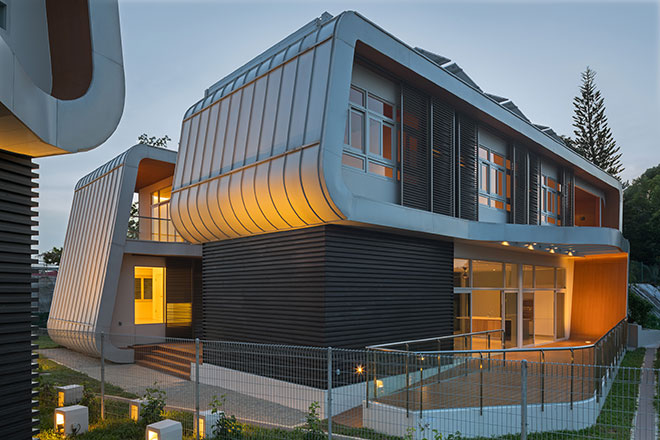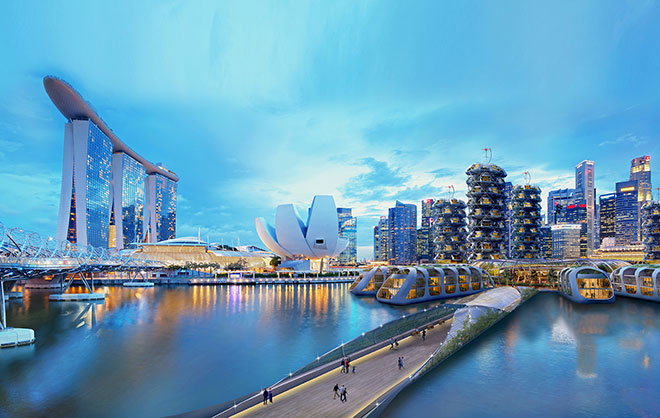 KUCHING: Going green is no longer just the perogative of environmentalists. Today, businesses fuelled by the general public are paying attention to how they can make a change to better the environment.
KUCHING: Going green is no longer just the perogative of environmentalists. Today, businesses fuelled by the general public are paying attention to how they can make a change to better the environment.
Firms all over the world are picking up on the importance of incorporating green practices or sustainability methods into their line of work.
Take Procter & Gamble Co (P&G) as an example. On December 16, the global retail mogul released its first-ever P&G Citizenship Report which details its progress in reducing environmental footprint as well as improving social conditions for those in need.
P&G’s chairman, president and chief executive officer, David Taylor, outlined the company’s progress in climate, water and waste reduction in addition to achieving its goal of reducing energy consumption by 20 per cent since 2010.
“We introduced Tide purclean, the first bio-based liquid laundry detergent, our Children’s Safe Drinking Water Programme delivered its 10 billionth litre of clean drinking water and provided support to over 25 natural disasters worldwide,” he said.
Since 1999, Taylor said P&G has published a sustainability report annually but upgraded it this year to include a more comprehensive overview of the good the company is doing.
“We are, and want to be known as a company that is governed responsibly, behaves ethically, open and transparent in its business dealings, supports good causes and protects the environment.
“We also want to be seen as a company that provides an appealing place to work where our employees are treated well and given the best opportunity to be all they can be,” he added.
Bursa jacking up sustainability efforts
While global brands have led the way in embracing sustainability, the trend is affecting Malaysian companies as consumers adapt to the mentality that brands could not profit at the expense of the environment.
This was perhaps why more companies are joining forces and stepping up sustainability efforts in areas such as renewable energy, human rights protection and supply chains.
Bursa Malaysia chief Executive Officer (CEO) Datuk Seri Tajuddin Atan said many businesses, investors and governments had also made enormous progress towards addressing sustainability risks, while capitalising on available opportunities.
“There is a growing consensus amongst investors that sustainability or environmental, social and governance (ESG) factors will translate into higher investment returns, and integrating non-financial considerations forms part of their fiduciary duties,” he said at the Sustainability Forum for Directors/CEOs earlier this week.
Institutional investors such as the Employees Provident Fund and Retirement Fund Inc had stated their commitment to consider ESG factors as part of their investment decision making process, he said.
Bursa Malaysia is a leading example of a bourse placing sustainability at the core of the Malaysian capital market.
“We remain mindful of the need for sustainable, innovative and forward looking solutions to maintain the competitiveness and attractiveness of our market,” he added.
As part of Bursa Malaysia’s commitment to elevate the quality of sustainability practices and disclosures of local public listed companies’, it introduced the FTSE4GOOD Bursa Malaysia Index, also dubbed the ESG Index, back in 2014.
It supports investors in making responsible investments in Malaysian public listed companies.
Bursa has also introduced the Sustainability Framework and Toolkits in 2015 with the core objective of bringing about a higher level of consciousness and integration of sustainability considerations into the business of local public listed companies, leading to better business and financial performance.
Companies with a market capital of RM2 billion and above with financial years ending Dec 31, 2016, will commence reporting under the new Sustainability Framework this year.
Tajuddin also emphasised the importance of the board of directors of public listed companies in fostering the culture of sustainability and to view it from the perspective of the value brought on by the adoption of good practices related to it.
“There is a strong value proposition for companies to embed sustainability, not only from a risk management perspective, but as part of a cog in the wheel of progress in moving towards the future,” he said.
Rewarding companies for taking up a stance
President of the ACCA Malaysia Advisory Committee, Datuk Dr Lukman Ibrahim, conveyed his congratulations, saying: “The winners of the ACCA MaSRA lead the way in demonstrating how sustainable business practices are an essential part of corporate risk management, and are ultimately crucial in determining a company’s investability quotient.
“ACCA has been encouraging conversations around sustainability reporting and corporate transparency since the 1990s because we strongly believe that sustainability should be at the heart of all businesses.
“Through the ACCA MaSRA programme, we’ve been able to observe an increasing number of companies in Malaysia demonstrate accountability and strategic drive that is at par with international practices.
This experience has been rewarding, to say the least.” The ACCA MaSRA was introduced in Malaysia in 2002, thereby making it the longest running awards programme in the country that aims to identify and recognise organisations that report and disclose full environmental, social and governance information.
This year, the judging criteria were aligned to incorporate Bursa Malaysia’s new listing requirements as provided in their Sustainability Framework, which now mandates public listed companies to publish a sustainability report with their annual statements.
Amendments to the Listing Requirements take effect on a staggered basis over three years, starting from 31 December 2016 to 31 December 2018.
This development underscores the urgency for Malaysian companies to relook at their sustainability disclosure practices.
In this context, the ACCA MaSRA initiative serves as a catalyst towards enhancing sustainability reporting in Malaysia.
The pursuit of greener designs
When tackled from the root, designing green buildings and infrastructure redefines the role of nature in the city from being mere scenery to becoming an essential supplier of ecosystems.
Thus we meet a new breed of high-performance landscapes that merges the interests of ecological and modern infrastructural needs.
According to Professor Jason Pomeroy, the founding principal of Pomeroy Studio, passive design is trending amongst sustainable architecture.
“Passive design takes advantage of the local climate to create a comfortable, liveable environment for the buildings’ occupants. This often results in less energy needed for heating and/or cooling, and less water consumed.
“Pomeroy Studio embraces passive design techniques and we like to draw on lessons that our ancestors here in Asia taught us, and use modern technology sparingly to create affordable, sustainable cities, buildings, landscapes and interiors,” he explained to BizHive Weekly in a recent interview.
“Pomeroy Studio’s approach to architecture also goes beyond this, and draws on the essence of culture and tradition to create built environments that positively impact people’s lives.”
For example, an earlier project by Pomeroy is the Idea House, Asia’s first carbon-zero prototype home.
While it used the best of modern technology, such as photovoltaic cells and water harvesting technology, the house was heavily influenced by the traditional Malay Kampong house.
“The Kampong house was built before the advent of technology, and was designed in such a way that optimised natural light and ventilation, and were expandable according to the size and need of the family,” he enthused.
“We drew inspiration from this traditional vernacular architecture of Southeast Asia, and reinterpreted it for the 21st century, resulting in a home that actually created surplus energy that could be fed back into the grid.”
BizHive Weekly talks to Pomeroy on his thoughts on this trend:

B House
Q: Borneo – like much of the region – is tropical, with high heat and high humidity. How can we adequately cool our homes in a sustainable fashion?
A: Well, we could start by looking to the past. Take the traditional Borneo Longhouse; they are one of the oldest designs in the world and they have stood the test of time for a reason.
The structures are elevated on stilts – allowing them to catch the above ground breezes (which itself has been cooled by the surrounding foliage) and cooling air is also able to circulate underneath the raised floor. The high ceilings would also allow air to circulate and cool within the home. The home is also flood-proofed; thanks to the fact it is elevated.
So if we take these passive design techniques that our ancestors employed, and brought in modern technology such as photovoltaic cells, water saving technology and sustainable materials and building practices – such as modular construction – there is no reason why we cannot build enough housing for Borneo’s citizens that is both sustainable, liveable and very affordable.
Q: How do older buildings provide a guide on building future buildings? Can you provide some examples?
A: This is a great question, and as I say this, I am currently in Songdo, South Korea, filming for my latest TV series called Smart Cities, that is due to air on Channel NewsAsia in February. Smart Cities will cover nine cities around the world – from Kashiwanoha in Japan to Amsterdam in The Netherlands – and I will be delving into each one looking at how each have become ‘smarter’.
I believe some of the most successful examples of Smart Cities are those that draw lessons from the past, such as design techniques, culture, heritage and tradition, and applied them to the present and future. Being ‘Smart’ does not just mean more technology, there must be a human element too.
As mentioned above, I designed the Idea House in Malaysia, Asia’s first carbon neutral prototype home, which employed passive design techniques used in the traditional Malay Kampong house (such as overhanging roofs, modular construction and external foliage), and, incorporated modern technology resulting in a building that generates more clean power than it uses.
Pomeroy Studio have also designed the B House, Singapore’s first targeted operational carbon negative house which was completed earlier this year. Again, we took cues from the past – this time using many of the design techniques from the old colonial black and white bungalows, and integrated then integrated modern smart technologies.
The resulting home will create more power than it consumes, yet at the same price as compared to a conventional bungalow in the area.
Both these are examples of how we can learn lessons from the past and distil the essence of traditional homes – such as Malaysia’s Kampong Home and Singapore’s Black and White bungalow – in order to create sustainable developments for the future.

Q: Is it possible to build sustainable mass housing?
A: Yes, this is very possible. Buildings developed according to sustainable principles are already no more expensive (or can be even cheaper) than ‘traditional’ homes.
Not only can green living come at accessible price points, but it is becoming ever more accepted that early incorporation of passive green design and the limited use of ‘green’ features can actually add value to a home of up to 10 per cent in some cases. So we know that sustainable housing is both affordable, and desirable from a value point of view.
When it comes to mass housing, Pomeroy Studio has already started working on a sustainable mass housing project in the Philippines called Optimma. Optimma is a housing community of 246 units that, when completed in 2018, will result in carbon-zero homes at a price point that will be accessible to the average Filipino homeowner.
This will be achieved through an evidence-based approach to sustainable design that seeks to minimise waste and redundancy in the design of the spaces, the structure, water and energy requirements. This will be coupled with reduced consumption and renewable energy sources to generate clean energy that the occupants could potentially use to earn income by selling back into the grid.
Another option is looking to the seas, instead of on land. Waterborne communities have existed for hundreds of years – think Venice, or the floating markets of Bangkok – and could form solutions to many of the urbanisation and environmental challenges that face rapidly developing nations such as Malaysia – as well as help mitigate against some of the issues posed by Climate Change.
East Malaysia’s major towns and cities are predominantly located by the sea, or on a river. As these urban centres grow, we can create floating communities based on a ‘Pog-Off-Grid’ structure, which allows for a central floating ‘Hub’ to connect via a ‘Spine’ to adjacent floating residential and commercial units. These communities can then expand and contract as demand dictates.
Q: What motivated you to focus on building eco-friendly, sustainable environments?
Whilst at Canterbury School of Architecture and the University of Cambridge, I developed a deep understanding of how green architecture can address many of the major built environment challenges of our time. The rate of urbanisation in the developing world, especially in Asia, has resulted in towns and cities that are in many ways unfit to care for their citizens. Pollution, congestion and a lack of green open spaces are a consequence of poor planning and a lack of attention to preserving culture and the environment, which exacerbate social and economic inequality.
Furthermore, with the world’s population expected to swell to 9.7 billion by 2050, the need to house these additional people will place huge stresses on the natural environment as well as the built environments existing infrastructure – China will require 800 million square meters of housing a year until 2030 (that’s the equivalent of the total land area of Singapore).
Therefore, it is the combination of social, cultural, economic, technological, environmental and spatial issues that beset our 21st century global society that motivates us to create the green cities, buildings, landscapes and interiors that we have become known for.
Q: Is it difficult convincing clients to go with building eco-friendly environments? How do you overcome that obstacle, if so?
A: There used to be a perception that anything with the word ‘sustainable’ or ‘green’ was prohibitively expensive. Thankfully this perception is changing. Developers and consumers are realising that, when executed properly, sustainable buildings are as cost effective as ‘traditional’ buildings, and actually cheaper in the long run – thanks to the energy savings that can be passed on to consumers.
Developers can further enhance the value of buildings by incorporating green features such as skycourts and skygardens, and can sometimes increase their value by up to 10 per cent. The clients we work with are very forward thinking and open, but they also see a business opportunity when it comes, and green architecture makes economic and philanthropic sense.
Furthermore, passive design techniques are by definition much cheaper and easier to implement. Simply orientating a building to take advantage of prevailing winds can significantly reduce the need for artificial ventilation and therefore reduces energy costs. The use of passive design techniques also creates an environment that is pleasant for employees and conducive to work.
A perfect example is Digital Hub@BSD City in Jakarta, Indonesia, which uses passive design and technology to significantly reduce its carbon footprint, yet is designed in a way to promote knowledge transfer and cooperation within the tech industries – ideal for today’s digital, sharing economy.
Q: Do you think there is increasing awareness of climate change in Malaysia in the last five years or so? What can be done to affect more positive changes?
A: Yes there certainly has been an increasing awareness among the Malaysian public. The flooding in 2014 opened the public’s eyes to the potential threats of Climate Change, as well as the problems posed by deforestation, and the government has promised to spend $700 million on green projects annually until 2017. It is also looking to cut carbon emissions by 40 per cent by 2020.
Of course, more can be done. I would like to see more skyrise greenery in the form of green roofs, skycourts and skygardens. This will reduce the urban heat island effect and reduce rainwater runoff – important in cities such as Kuala Lumpur and Kuching – as well as create more spaces for social interaction.
New buildings should have less glazing and improved thermal performance of their façades, reducing solar heat gain. Other practical and easy-to-implement steps include fixing aeration devices to taps, reducing average water consumption from 133 litres of water a day to 64 litres of water a day, energy efficient light bulbs, using a fan instead of air-conditioning and incorporating household plants on balconies to absorb noxious pollutants.
Lastly, in the context of reducing consumption, we need to think beyond technology, and look to incorporate culture and heritage into our buildings.
How our ancestors lived gives us many clues as to how we can live sustainably in the future, as well as providing a more authentic living environment beyond the ubiquitous condominium.
